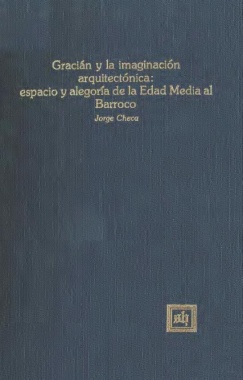A detailed analysis of the functional role of architectonic images from the Middle Ages to the seventeenth century. "A valuable and well-structured study." -David J. Hilner, Hispania. "[Checa] presents a perceptive and unique contribution to the traditional corpus critical interpretation of allegorical works and provides the foundation for future research." -Joan Cammarata, Modern Language Studies. "La labor de Checa es muy meritoria por su planteamiento, originalidad y meticulosa articulación teórica." -Antonio Torres Alcalá, Revista de Estudios Hispánicos.
- Cover
- Title page
- Copyright page
- Índice
- Preliminar
- PRIMERA PARTE. La arquitectura visionaria en la literatura alegórica de la Edad Media castellana.
- Introducción
- I. La alegoría arquitectónica como medio de formalización del conocimento y como imagen del orden
- "La Visión delectable" de Alfonso de la Torre
- "El Laberinto de Fortuna" de Juan de Mena
- II. El espacio visionario como lugar de la revelación
- El viaje visionario en el "Infierno de los enamorados" y en el "Triunfo del Marqués"
- Jardines. La imagen del "hortus conclusus" en el "Dezir a las syete virtudes".
- "La Divina Comedia". Recapitulación y conclusiones
- SEGUNDA PARTE. La imaginería arquitectónica en dos géneros literarios de los siglos XVI y XVII
- Introducción
- III. Poesía épica
- "Orlando Furioso"
- "Gerusalemme liberata"
- "The Faerie Queene"
- IV. Anatomía satírica
- El espacio en la anatomfa lucianesca del siglo XVII. La imagen del infierno en Quevedo.
- "República literaria" de Saavedra Fajardo
- TERCERA PARTE. La imaginería arquitectónica en "El Criticón" de Gracián
- Introducción
- V. Funciones del espacio arquitectónico en "El Criticón"
- La peregrinación de la vida
- El mundo como teatro
- El laberinto de la existencia
- VI. La imaginería arquitectónica del "Criticón": técnicas y principios de representación alegórica
- Indice Analítico
- Scripta humanísitica

